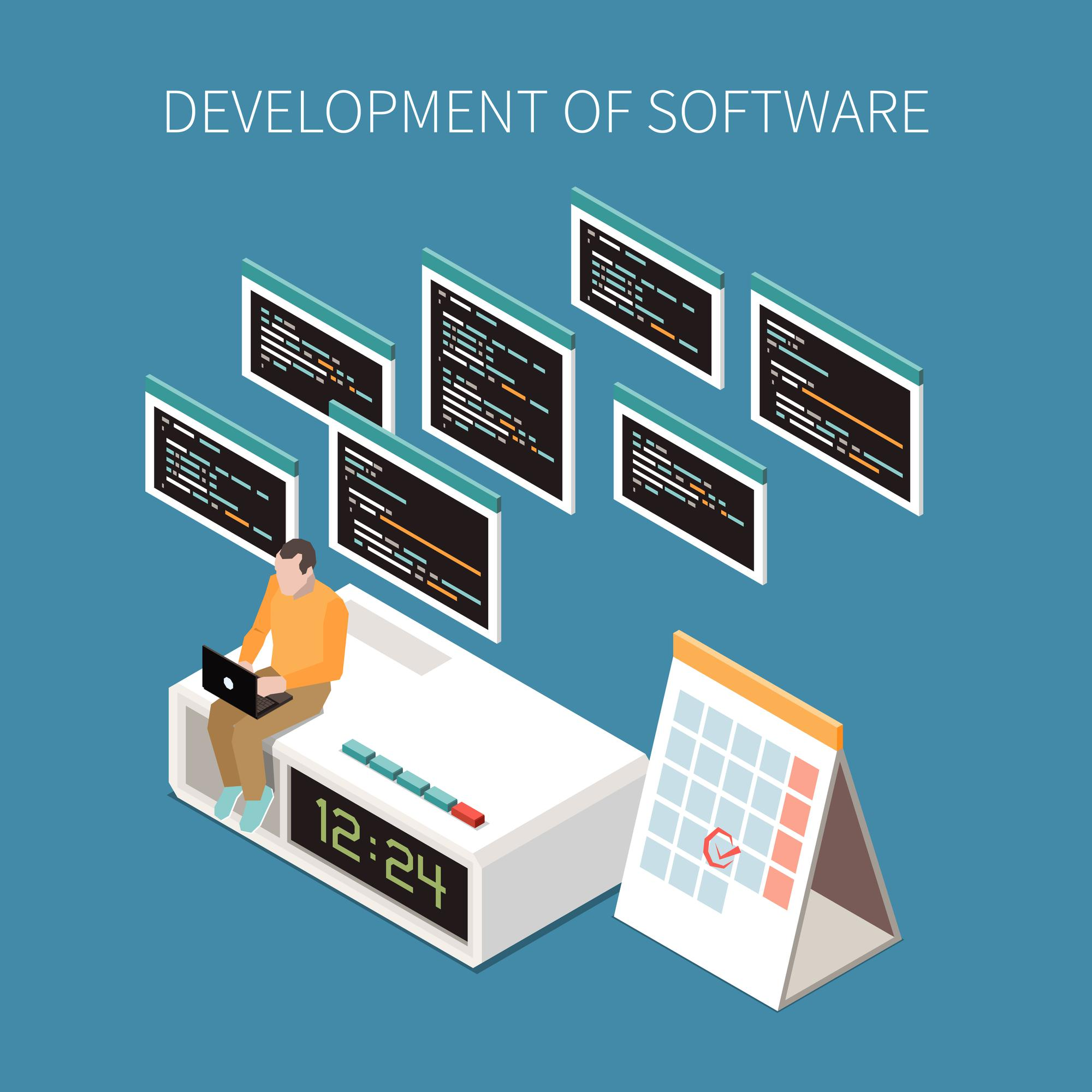In today’s rapidly evolving technological landscape, mastering software engineering is more critical than ever. Effective development demands a holistic approach that encompasses design, collaboration, testing, and maintenance. But where do you begin?
This blog post equips you with the skills and knowledge necessary to excel in software engineering. From understanding the software development process to harnessing the power of design patterns and best practices, this article provides a roadmap to success.
Join us on this journey as we unravel the secrets of software engineering.
Together, we will navigate the ever-changing landscape of software development, equip ourselves with the tools needed for success, and become the architects of remarkable software systems.

Mastering Software Engineering
Software engineering is a discipline within the field of computer science that focuses on the systematic approach to developing, designing, and maintaining software systems. It encompasses a set of principles, methods, and techniques aimed at creating high-quality software products efficiently and effectively.
At its core, software engineering is concerned with the entire lifecycle of software, from its conception and requirements analysis to its design, development, testing, deployment, and maintenance.
It involves the application of engineering principles and practices to software engineering processes, ensuring that software systems are reliable, scalable, and meet the needs of users.
Software engineering goes beyond mere coding. It involves a holistic approach that considers not only the technical aspects of software engineering but also the human factors, project management, and the integration of software into larger systems.
It requires collaboration and coordination among multidisciplinary teams, including software engineers, designers, testers, project managers, and stakeholders.

What Is the Goal of Software Engineering?
The goals of this engineering include delivering software products that meet user requirements, are delivered within the specified time and budget constraints, and are of high quality in terms of reliability, maintainability, and performance. It emphasizes the use of systematic methods, software development processes, and industry best practices to achieve these goals.
Key activities in software engineering include requirements engineering, software design, coding, testing, configuration management, and project management. These activities are often guided by various software development methodologies, such as the waterfall model, agile methods (e.g., Scrum, Kanban), or a combination of different approaches tailored to the specific needs of the project.
In summary, software engineering is a systematic and disciplined approach to developing software systems that involve the application of engineering principles, methods, and tools. It aims to create reliable, scalable, and high-quality software products through the effective management of the entire software dev lifecycle.

Understanding the Software Development Process
To master software engineering, it is essential to understand the software dev journey and the role it plays in effective development. This process consists of various phases and activities that guide the creation of software systems.
Overview of the Software Development Journey
The software dev journey consists of several interconnected phases, each with its own set of activities and goals. By following a well-defined process, software practitioners can systematically transform user requirements into a functional software system.
Let’s examine the main phases and activities involved in software development:

Requirements Gathering
In this phase, software practitioners collaborate with stakeholders, such as clients and end-users, to understand their needs and gather detailed requirements for the software system. This involves conducting interviews, workshops, and brainstorming sessions to capture the essential features, functionalities, and constraints of the software.
Analysis and Planning
Once the requirements are gathered, software practitioners analyze and refine them to create a clear vision for the software system. They identify potential risks, define project scope, create a timeline, and plan resource allocation and budgeting. This phase ensures that the project goals align with the available resources and constraints.
Software Design
The software design phase focuses on creating a blueprint for the software system. Software practitioners translate the requirements into a detailed design that defines the architecture, structure, and behavior of the software. This phase involves defining the software components, their interactions, and the overall system organization.

Implementation and Coding
In this phase, software practitioners start writing the code based on the design specifications. They use programming languages, development frameworks, and best practices to implement the software functionalities. The code is structured, and modular, and follows coding standards to ensure readability and maintainability.
Testing and Quality Assurance
Testing is a crucial phase to ensure that the software functions as intended and meets the requirements. Software practitioners perform various testing activities, including unit testing, integration testing, system testing, and user acceptance testing. Quality assurance techniques are employed to identify and fix defects or issues before the software is deployed.
Deployment and Release
Once the software is thoroughly tested and approved, it is deployed to the production environment. This phase involves installing the software, configuring the necessary infrastructure, and ensuring smooth operation. Software practitioners monitor the performance and address any issues that may arise during the deployment process.
Maintenance and Updates
After the software is deployed, it enters the maintenance phase. Software practitioners provide ongoing support, bug fixes, and updates to keep the software running smoothly. This phase includes addressing user feedback, enhancing functionalities, and adapting to changing requirements.
Software Design and Its Impact on Development
Software design is a critical aspect of the software dev journey. It involves creating a well-thought-out plan and structure for the software system based on the requirements. Effective software design significantly impacts the success of the development journey. Here are two key aspects of software design and their impact on development:

Importance of Software Design in Effective Development: Good software design is essential for building a robust, scalable, and maintainable software system. It helps software practitioners understand the structure and behavior of the software, enabling them to develop clean, modular, and efficient code. Well-designed software reduces the likelihood of errors, simplifies debugging, and promotes code reuse.
Software Design Techniques and Principles: Software practitioners employ various techniques and principles to create effective software designs. These techniques include architectural patterns, object-oriented programming (OOP), and design heuristics. Architectural patterns provide high-level structures and guidelines for organizing the software components. OOP promotes encapsulation, inheritance, and polymorphism to achieve modularity and extensibility. Design heuristics, such as the SOLID principles, guide the creation of software designs that are flexible, maintainable, and easily adaptable to change.
Introduction to Software Engineering Best Practices
Software engineering best practices are established guidelines and principles that ensure high-quality software engineering. By adhering to these practices, software practitioners can improve the efficiency, maintainability, and reliability of the software system. Let’s explore some key software engineering best practices:

Code Maintainability and Readability: Writing clean and readable code is essential for collaboration, understanding, and maintenance. Software practitioners should follow coding conventions, use meaningful variable names, write concise and well-documented code, and apply proper indentation and formatting. Readable code promotes collaboration among team members and simplifies the debugging and enhancement process.
Version Control and Collaboration with Multiple Developers: Version control systems, such as Git, enable software practitioners to track and manage changes to the source code. By utilizing branching, merging, and code review features, multiple developers can work on the same codebase simultaneously while maintaining code integrity. Version control enhances collaboration, facilitates bug tracking, and enables easy rollbacks.
Unit Testing and Quality Assurance: Unit testing is an essential practice in software engineering that involves writing test cases to verify the individual components of the software system. Automated testing frameworks and tools help ensure that each component functions correctly and meets the desired specifications. Quality assurance techniques, including code reviews, static code analysis, and continuous integration, help identify and rectify issues early in the development journey, leading to a more stable and reliable software system.
Refactoring Code for Improved Efficiency: Refactoring is the process of restructuring existing code without changing its external behavior. It aims to improve code efficiency, readability, and maintainability. Software practitioners refactor code to eliminate code smells, reduce technical debt, and optimize performance. By regularly refactoring code, software practitioners can enhance the overall quality and longevity of the software system.
By incorporating these software engineering best practices into the development journey, software practitioners can create high-quality software systems that are scalable, maintainable, and robust.
Exploring Design Patterns in Software Engineering
Design patterns are powerful tools in software engineering that help solve common design problems and improve software architecture. By understanding and applying design patterns, software engineers can create software systems that are more modular, flexible, and easier to maintain.
Software design patterns can be categorized into three main types: creational, structural, and behavioral patterns. Creational patterns, such as the Singleton and Factory Method patterns, focus on object creation.
Structural patterns, like the Template Method deal with the composition of classes and objects.
Behavioral patterns, including Command and Observer, address communication and interaction between objects.

Understanding the Purpose and Application of Each Design Pattern
Each design pattern serves a specific purpose and provides a solution to a particular design problem. Understanding the intent and application of each pattern is crucial for utilizing them effectively in software engineering. Real-world examples and scenarios can illustrate how design patterns are useful in practice.
Composing multiple design patterns can help solve complex problems in software engineering. By combining patterns, software engineers can address larger structures and create software systems that are modular, extensible, and loosely coupled. This approach promotes code reusability and flexibility.
Deep Dive into Selected Design Patterns
Certain design patterns deserve a deeper exploration due to their prevalence and significance in software engineering. Let’s delve into the Singleton and Factory Method patterns to understand their definitions, purposes, and practical applications.

Singleton Design Pattern
The Singleton design pattern ensures that only one instance of a class exists throughout the application. This pattern is useful when you want to restrict the instantiation of a class to a single object. It guarantees global access to that object, making it easily accessible from any part of the codebase.
The Singleton pattern finds its application in scenarios where having multiple instances of a class would be wasteful or detrimental. For example, in a logging system, having multiple loggers could lead to duplicated logs and unnecessary overhead. By implementing this pattern, you ensure that only one logger is created and shared among the entire application.
Factory Method Design Pattern
The Factory Method design pattern provides an interface for creating objects without specifying their concrete classes. This pattern enables you to delegate the object creation process to subclasses, which determine the specific type of objects to be created.
The Factory Method design pattern is helpful when you need to create objects that share a common interface but may have different implementations. For instance, in a car manufacturing system, the factory method can be used to create different types of cars (e.g., Sedan, SUV) without tightly coupling the code to specific car classes. This flexibility allows for easy extension and maintenance of the codebase.
Other commonly used design patterns include behavioral patterns like Command and Observer, which handle communication and interaction between objects, and structural patterns like Composite and Decorator, which focus on the composition and structure of objects. Creational patterns like Abstract Factory and Prototype provide solutions for object creation and initialization.

Conclusion
Mastering software engineering is a journey that involves understanding the importance of effective software development, exploring design patterns, and applying best practices.
Design patterns play a significant role in enhancing software architecture, promoting code reusability, and improving code readability and maintainability.
By incorporating design patterns and adhering to best practices, software engineers can navigate the path to effective development, avoid wasted time and major problems, and create software systems that meet user requirements and expectations.

People Also Ask (FAQs)
What is a software design pattern?
A software design pattern is a reusable solution that captures best practices and proven techniques for solving common design problems in software development. It provides a blueprint for structuring code and interactions between classes and objects. By applying design patterns, software developers can create modular, flexible, and maintainable software systems.
How does class and object composition relate to software design patterns?
It is a fundamental concept in software engineering that design patterns often leverage. Composition allows objects to be combined to create more complex structures or behaviors. Design patterns utilize composition to create relationships between classes and objects, promoting code reusability and enhancing the flexibility and scalability of software systems.
Why have design patterns gained popularity among software developers?
Design patterns have gained popularity because they offer proven solutions to recurring design problems in software development. By incorporating design patterns, developers can save time and effort by building upon established solutions. Design patterns also promote code reuse, enhance software architecture, and improve code readability and maintainability. Their popularity stems from their ability to streamline development processes and create robust software systems.
How does reusable object-oriented software tie into design patterns?
Reusable object-oriented software is a key goal in software engineering, and design patterns play a crucial role in achieving it. Design patterns provide guidelines and solutions that facilitate the creation of reusable software components. By following design patterns, developers can design classes and objects that are modular and independent, making them easier to reuse in different contexts. This promotes code efficiency, reduces duplication, and enhances the overall quality of the software system.




